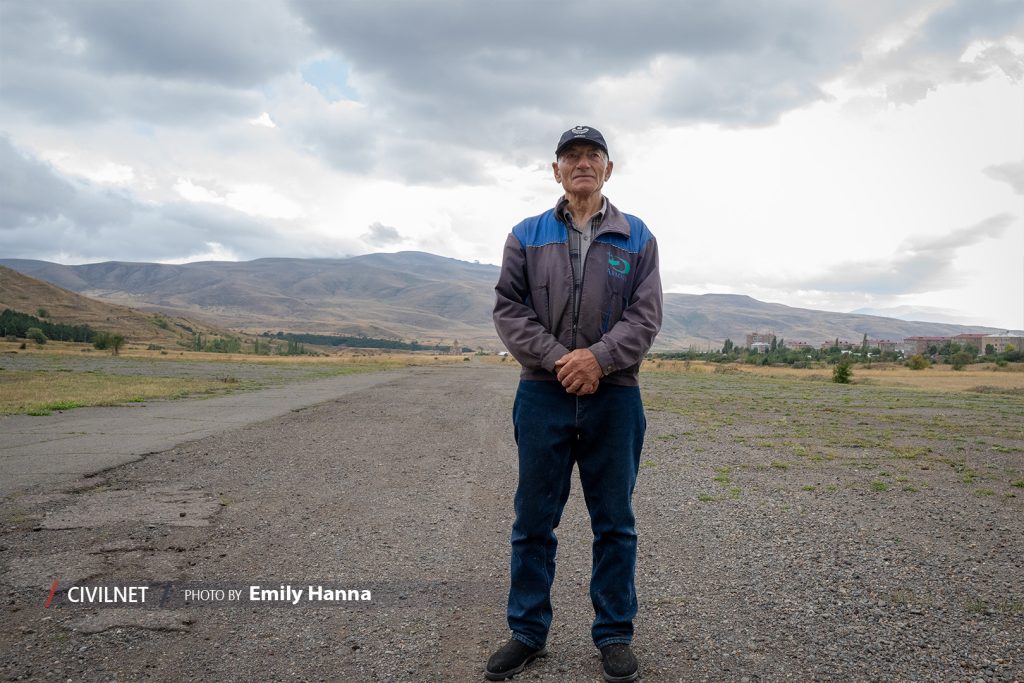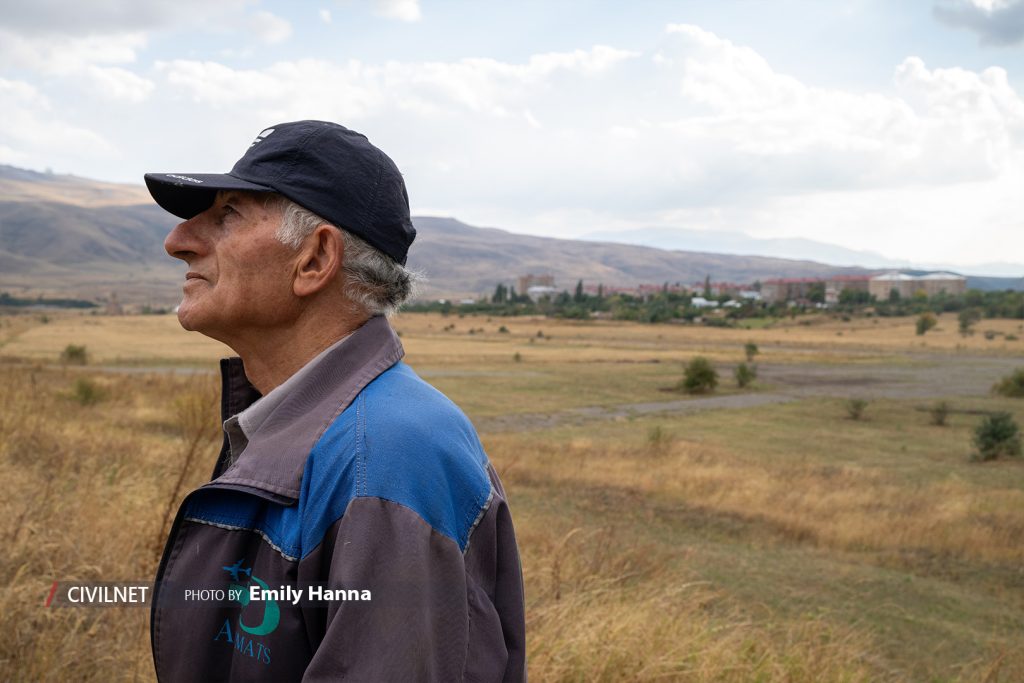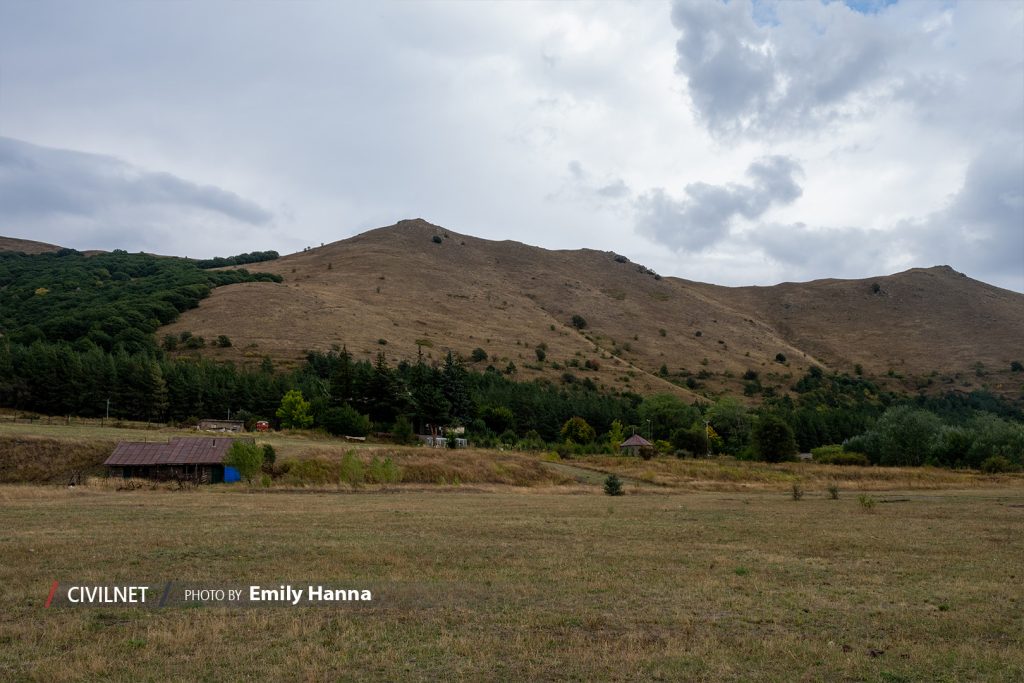By Alexander Pracht
The small spa town of Jermuk, known for its mineral water springs, is hidden in a remote mountainous valley at an elevation of roughly 2,100 m above sea level in Armenia. Jermuk is only accessible by a single road that veers off the highway connecting Yerevan with Armenia’s southern regions. Beyond it, is Azerbaijani territory.
Right before reaching Jermuk’s waterfalls, ropeways and hot springs, there is a long stretch of land on the left-hand side, where the faint outlines of an abandoned runway become visible.
This grayish swathe of concrete, dirt, and withered autumn grass that inevitably catches the eye of every visitor is symbolic of the town’s decline. Once a thriving tourist destination, Jermuk now sees far fewer visitors, a shift driven by the waning appeal of spa towns in Armenia, the opening of borders in the early 1990s, and more significantly, by the impact of Azerbaijani aggression.
At its peak, Jermuk’s airport served four daily flights to and from Yerevan. It was eventually shut down in 1989 just before the dissolution of the Soviet Union and the catastrophic energy and economic crisis in Armenia.
Though the future of this airport doesn’t look bright, there is someone who still believes it might get back on track. The airport’s former manager, Mels Arakelyan, now in his early 70s, acquired the former terminal and the land plot around it and turned it into a farm.
“Back in the day, the airport was always packed. Though landing here was a challenge even for the best of pilots, it was only a 20-minute flight between Jermuk and Yerevan, so many visitors would come here to enjoy our hot springs and spa resorts each day,” he recalls.
Clik here to view.

Without a deep knowledge of aviation, it’s still easy to understand why landing even a light plane here wasn’t a walk in the park.
“Only an experienced pilot could navigate the local terrain to approach the runway. The wind here is notoriously strong and almost always blows in the direction the plane is landing, which goes against general aviation rules that dictate it should be the opposite. On top of that, the glide path is incredibly steep,” Arakelyan explains.
When the airport ceased operations, Arakelyan didn’t want the terminal to fall into disuse, so he bought the building from the state, settled here with his wife, and started a farm. They’re always happy to welcome visitors from the capital, such as campers who come for stargazing, particularly during meteor showers.
The couple has made a nice home here, though Mels says he intentionally left the airport’s control tower unoccupied. “You never know what’s going to happen,” he says with a smile.
Clik here to view.

Arakelyan is overall very optimistic about the facility’s future. He mentions the airport in Kapan, a town in Armenia’s southernmost Syunik region, which was reopened last year after decades of abandonment and subsequent renovation and now serves scheduled flights to and from Yerevan, even though its tarmac is just a few feet away from the Azerbaijani border.
Just like Kapan, Jermuk is located close to the frontier. During their offensive in September 2022, Azerbaijani forces shelled the town and invaded internationally recognized Armenian territory near Jermuk, which they continue to occupy to this day.
“Many people fled the town when the attacks happened. There are still far fewer visitors in Jermuk now than before the assault, but little by little, they are beginning to return,” Arakelyan says. “When they attacked us, they shelled the airstrip as well, and one of the shells landed near my barn. It didn’t explode and lay there for several days. Then bomb technicians arrived to defuse it and filled in the crater,” he recalls, adding mournfully that he had to slaughter his cows after the shelling as he was unsure they would survive the stress.
Clik here to view.

Though Jermuk’s future is uncertain, Arakelyan still believes the government might invest in rebuilding the airport.
“The runway has lots of cracks, but it can be easily repaired. Even if they find landing planes here too challenging, they might at least set up a helipad here and launch helicopter service. They can even use the same L-410 plane that flies between Yerevan and Kapan.”
Mels says he’d be more than happy if the government resumed flights. “They might build a new terminal, but I’d be OK with them occupying the old building, as I own it, and they’ll have to buy it from me. Then I’ll take that money and build myself a new house in Jermuk. This is where I’ve spent my entire life,” he concludes.
The post Former airport manager maintains a farm at an abandoned runway in Jermuk appeared first on CIVILNET.